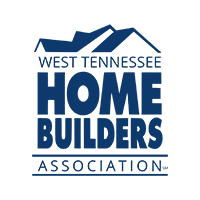The ongoing housing affordability crisis across the country is having a significant impact on how a large portion of Americans are living, budgeting and planning for their futures.
With a nationwide shortage of approximately 1.5 million housing units, home prices and rent have both increased — up 26% and 47%, respectively, since 2020 — according to the latest Harvard University Joint Center for Housing Studies’ (JCHS) The State of the Nation’s Housing 2024 report.
The Economic Indicators Influencing Housing Affordability
A number of economic indicators reveal a severely unaffordable housing market.
NAHB’s recently released Cost of Housing Index (CHI) showed that 38% of a typical family’s income is needed to make a mortgage payment on a median-priced new single-family home in the United States.
Low-income families (earning only 50% of the median income) have to spend well more than half of their income (77%) to pay for the same home.
The same struggles ring true for those purchasing existing homes — the median prices for which hit an all-time high last month. A typical family has to pay 36% of their income for a median-priced existing home while a low-income family needs to pay 71% of their earnings to make the same mortgage payment.
Another indicator shows that 103.5 million U.S. households’ income isn’t sufficient to afford a median-priced new home ($495,750) because they aren’t able to qualify for the required mortgage underwriting criteria, according to NAHB’s Eye on Housing.
The lack of housing availability across the United States is also problematic. While new single-family home inventory in May is up 12.9% from a year prior, combined inventory for new and existing single-family homes is at just a 4.4 months’ supply, according to NAHB estimates, slightly up from April’s 4.1 and 3.6 in May 2023.
High interest rates are causing fewer home owners to put their homes on the market. Because home owners are locked into lower interest rates, they’d face a sharp increase in costs should they purchase a new home with mortgage rates so high.
Regional Variations in Housing Attainability
Homeownership costs are skyrocketing in some of the nation’s most coveted cities, as highlighted in the CHI. The index examined housing in 176 metro areas and found eight markets that were considered "severely cost-burdened," meaning over half of a typical family’s income is needed to pay for a mortgage on a median-priced existing home. Eighty other markets were considered "cost-burdened," needing to spend between 31% and 50% of their incomes on housing.
From a regional standpoint, families in metro areas in the central United States are paying for lower home prices on housing units relative to income than those along the coasts or in the southern and western parts of the country. Of the top five most cost-burdened metros, three (San Jose-Sunnyvale-Santa Clara, San Diego-Chula Vista-Carlsbad, and San Francisco-Oakland-Berkeley) were in California. Naples-Marco Island in Florida and Urban Honolulu in Hawaii rounded out the list.
With the exception of metro areas surrounding Chicago and Milwaukee, Midwestern states like Illinois, Iowa, Michigan and Ohio feature the least cost-burdened housing markets.
Soaring housing costs also harm renters. Half of all renter households were cost-burdened in 2022, which is the highest number on record.
Impact of Government Policies on Affordable Housing Costs
The lack of affordable homes and dwindling housing stock are deterring would-be home buyers from settling down.
Nearly four out of five Americans agree that the country is in the midst of a housing affordability crisis and that government officials aren’t doing enough to address the unrelenting crisis in housing, according to a survey conducted by the polling firm Morning Consult.
Many problems stem from regulations at the government level that hinder the production of housing. Regulations account for nearly 25% of the cost of a single-family home and more than 40% of a typical apartment development.
Additional problems include the high cost of building materials (up 38% since the pandemic), a chronic shortage of skilled labor, the struggle to pass federal tax legislation to decrease the cost of home building, and the soaring cost of local impact fees and other upfront taxes.
NAHB’s 10-Point Plan to Address the Housing Affordability Crisis
With the housing affordability crisis forcing families to spend such a large percentage of their income on a place to live, NAHB has created a 10-point housing plan to remove barriers that slow down the construction of new homes at the local and national level.
- Eliminate excessive regulations.
- Promote careers in the skilled trades.
- Fix building material supply chains and ease costs.
- Pass federal tax legislation to expand the production of affordable and attainable housing.
- Overturn inefficient local zoning rules.
- Alleviate permitting roadblocks.
- Adopt reasonable and cost-effective building codes.
- Reduce local impact fees and other upfront taxes associated with housing construction.
- Make it easier for developers to finance new housing.
- Update employment policies to promote flexibility and opportunity.
Read more about NAHB's plan to reduce housing costs.
